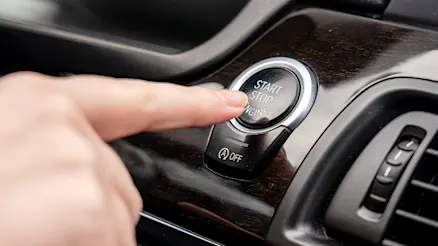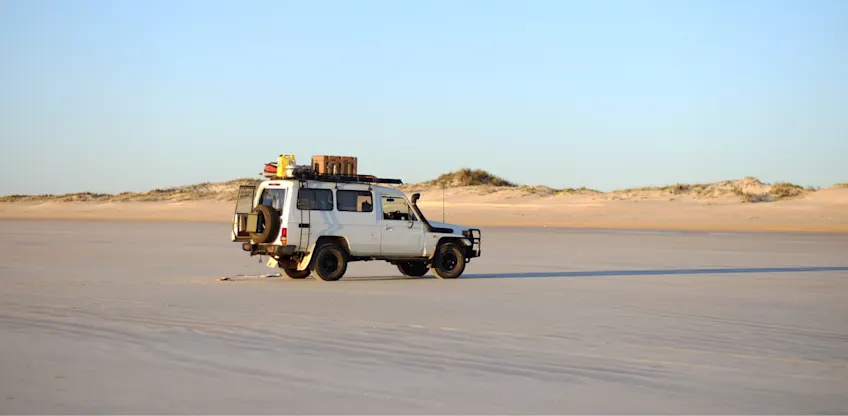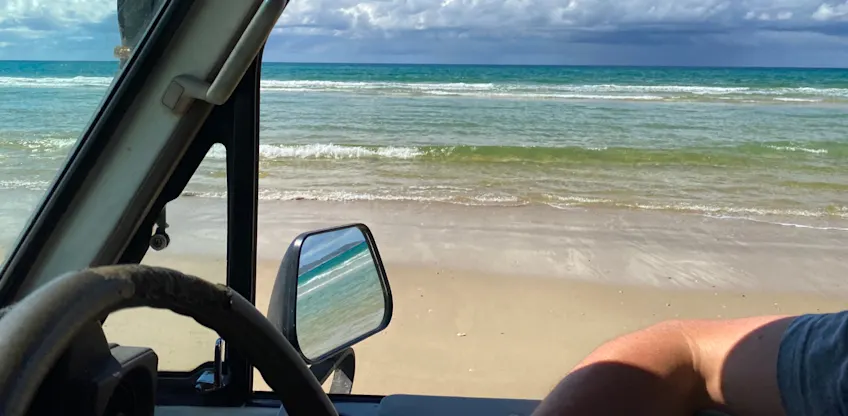
Why does my car behave differently when I start it in the morning?
Ever notice your car feels different in the morning? Learn why cold starts affect performance and how to keep your car running smoothly year-round.


Ever notice your car feels different in the morning? Learn why cold starts affect performance and how to keep your car running smoothly year-round.

Regularly checking your tyre pressure is crucial to your vehicle’s safety, fuel economy and optimal driving.

Looking for the perfect gift for the car enthusiast in your life? Carma’s experts have you covered.
Welcome to off-roading, beach edition. The ultimate guide to four-wheel driving safely on sand and in unpredictable conditions. Having recently covered the basics of off-roading, it’s time we shifted our attention to the fun (but definitely treacherous), Aussie coastline.
In Australia, there really is no bad time to buy a 4WD, even if you’re someone with little to no off-road experience. As long as you’re cautious and well-prepared, there’s nothing stopping you from joining the crowds of people heading towards the ocean to cruise up and down some of the most iconic white sandy beaches in the world. Before you do, however, there’s a few things you ought to know to ensure you make it back from the beach in one piece.
Planning a trip? Get prepared with our ultimate summer road trip guide!
Unfortunately for the 2WD and AWD owners amongst us, tackling sand can become quite the obstacle. AWD systems on cars such as the Hyundai Tucson or Subaru Outback, whilst great for improved traction on road, can be more fragile in off-road environments and are therefore not always the best choice. An important first step is understanding the specific capabilities of your car to ensure you don’t accidentally push it past its limits. If you’re unsure, we advise referring back to your owners manual for use in sandy conditions.
Generally speaking, if you’re looking for a vehicle that can reliably get you on, off and around the beach, a 4WD is your best bet (and even then, the likelihood of you getting bogged at some point is still pretty high). Differential lock (diff lock) and low range are features commonly found in 4WD vehicles that provide an additional level of capability not often found in other vehicles.
So what does that mean?
Differential Lock (Diff Lock):
Low Range:
So which 4WD vehicles are best cut out to tackle a beach day? Whilst the answer to this depends on a number of factors, our top three would have to be a Toyota LandCruiser (any of them), Nissan Patrol or Suzuki Jimny, all of which are capable in their own unique way to get you around the dunes, down to the ocean and back on the bitumen again.

Before you depart, it’s important to understand the specific requirements of the beach you intend to drive on. Different coastal areas will have different rules governing vehicle access, so be sure to do your research prior to leaving to ensure you have the correct permits - this is particularly important in remote areas where access to the internet to check might be limited. Additionally, be mindful of restricted areas, as some beaches may have designated zones to protect sensitive ecosystems or nesting wildlife.
Understanding speed limits and traffic rules on the beach is important to ensure both your own safety and the safety of those around you. By familiarising yourself with basic beach-driving etiquette, you’ll be well on your way to a hassle-free off-roading escapade.
Equipping yourself with the right gear is paramount to any successful beach expedition, check out our general off-roading guide for the basics.
Soft sand is an old enemy of beach drivers, and it’s important to remember that cars HAVE been swallowed by the ocean - just because it’s unlikely doesn’t mean it won’t happen to you.
So make sure to leave plenty of room in your vehicle for essential recovery gear, including tow straps, jacks, and traction boards. A well-stocked first aid kit and emergency supplies are also non-negotiables, as you never know what kind of trouble you might run into when gallivanting off the beaten track. Plus, don’t forget a tyre inflator for when you’re back on solid ground.
Safety should take centre stage when doing any four-wheel driving. As conditions can change rapidly, it’s important to check tide schedules and weather forecasts frequently to ensure you’re not going to be caught on the wrong side of a water crossing that was passable only minutes before.
If you’re new to driving on sand, it’s also important to understand that just because things are going great one second, does not guarantee that they will be the next. Communication devices, such as two-way radios or a reliable mobile phone, are essential for staying connected in remote areas, and might be the difference between you sleeping rough or making it back to home base.

When it comes to navigating sand, here are our top tips:
After a beach driving excursion, it’s crucial to perform thorough maintenance checks on your vehicle. Saltwater exposure can accelerate corrosion, so rinse the undercarriage, tyres, and body thoroughly with fresh water to remove salt residue. Pay special attention to the brake system, suspension components, and any exposed metal parts. If you tackled some water crossings, it might be a good idea to inspect the engine bay and electrical connections to ensure everything is in good condition. If you do notice something that needs repairing, promptly address the issue to prevent long-term damage.
Additionally, part of the responsibility of off-road beach driving is leaving the environment as you found it. Practice the ‘leave no trace’ principles, and clean up any litter or debris in the area - even if you weren’t the one who left it there in the first place. Remember, it's important to respect local regulations and guidelines to minimise your impact on the environment and ensure that the next group of beachgoers can also have a great experience.
So what are you waiting for? Grab your gear and get ready to hit the sand! Just remember that there’s no harm in hoping for the best, just as long as you’re prepared for the worst.